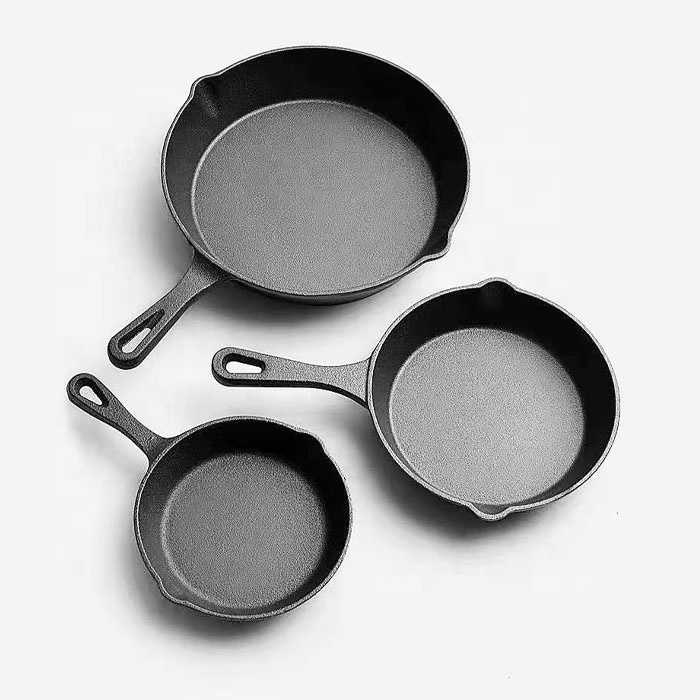
cast iron dutch pot
The Versatility of Cast Iron Dutch Ovens
Cast iron Dutch ovens have been a staple in kitchens around the world for centuries, and their enduring popularity can be attributed to their exceptional durability, versatility, and ability to retain heat. Whether you're a seasoned chef or a home cook, incorporating a cast iron Dutch oven into your culinary repertoire can elevate your cooking experience.
History and Evolution
The history of cast iron cooking dates back to ancient times, but the Dutch oven as we know it began to take shape in the 18th century in Europe, particularly in the Netherlands. The design was simple yet effective, featuring a thick, heavy lid that could maintain moisture and heat. This innovative cooking tool made its way to America, where it became essential in pioneer life for its ability to cook over an open flame or in an oven. The tradition of using cast iron cookware has evolved, but the fundamental qualities that make Dutch ovens invaluable—heat retention, durability, and even cooking—remain unchanged.
Benefits of Cast Iron Dutch Ovens
1. Superior Heat Distribution Cast iron is known for its ability to distribute heat evenly across its surface. This ensures that food is cooked uniformly, reducing the chances of hot spots and burning. Whether you are simmering a hearty stew, baking bread, or frying chicken, a Dutch oven delivers consistent results.
2. Versatility in Cooking Methods A cast iron Dutch oven can be used for a variety of cooking techniques. It’s perfect for braising, baking, boiling, and frying. You can start a dish on the stovetop and transfer it directly to the oven without needing to change pots. Additionally, it’s suitable for all heat sources, including direct flame and induction cooktops.
3. Longevity With proper care, a cast iron Dutch oven can last for generations. Unlike non-stick pans that may degrade over time, cast iron develops a natural non-stick surface when seasoned correctly. This means you can enjoy not only a kitchen tool that lasts but also one that improves with age.
cast iron dutch pot

4. Health Benefits Cooking with cast iron can add a small amount of dietary iron to your food, which is beneficial for individuals needing iron supplementation. It’s also free from harmful chemicals often found in coatings of non-stick cookware, making it a safer option for your kitchen.
Maintenance and Care
To ensure the longevity of your cast iron Dutch oven, seasoning it is crucial. Seasoning involves applying a thin layer of oil and heating it to create a non-stick surface. After use, clean your Dutch oven with hot water and a stiff brush, avoiding soap as it can remove the seasoned layer. Dry it immediately and apply a light coat of oil to prevent rusting.
Culinary Inspiration
The possibilities are endless when it comes to recipes for your cast iron Dutch oven. You can create comforting dishes like beef stew, creamy risotto, or baked pasta. For those who enjoy baking, it’s excellent for artisan bread, providing a crusty exterior and soft interior. Brownies and cakes come out beautifully as well, making it a versatile tool for both savory and sweet recipes.
Conclusion
In conclusion, a cast iron Dutch oven is more than just a cooking vessel; it's a time-honored tool that connects generations of cooking enthusiasts. Its ability to adapt to various cooking methods, combined with its strength and high heat retention, makes it a worthy investment for any kitchen. Embrace the artistry of cooking with a cast iron Dutch oven, and you will discover the rich flavors and textures that it can bring to your meals. Whether you’re preparing a family dinner or baking a loaf of bread, this cookware will surely become a treasured staple in your culinary adventures.
-
Season Cast Iron Perfectly with GPT-4 Turbo TipsNewsAug.01,2025
-
High Quality Cast Iron Cookware - Baixiang County Zhongda MachineryNewsAug.01,2025
-
Premium Cast Iron Pan: Durable & Perfect HeatNewsAug.01,2025
-
High Quality Kitchen Durable Black Round Cast Iron Cookware Pancake Crepe Pan-Baixiang County Zhongda Machinery Manufacturing Co., Ltd.NewsAug.01,2025
-
Cast Iron Cookware - Baixiang County Zhongda Machinery | Nonstick, Heat ResistanceNewsAug.01,2025
-
High Quality Kitchen Durable Black Round Cast Iron Cookware - Baixiang County Zhongda Machinery | Non-Stick, Heat Retention, DurableNewsJul.31,2025


